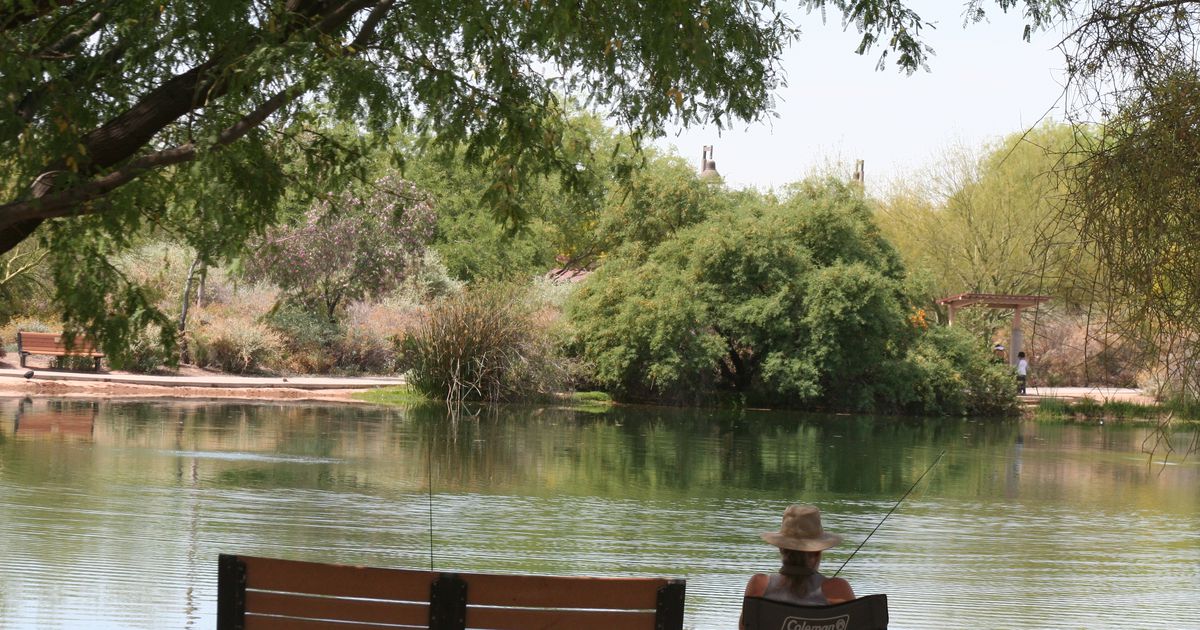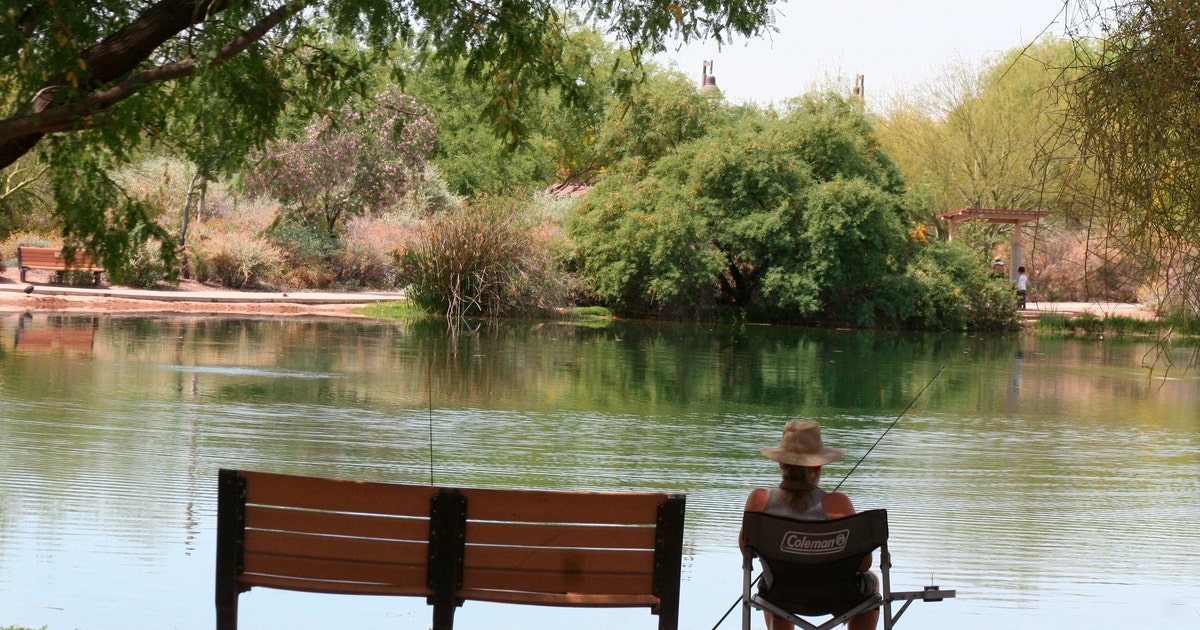Community fishing’s a popular outlet during pandemic


CHANDLER, Ariz. (AP) — Tim Wirtz Jr. slowly spun the reel, tracking the retrieval of a plastic worm, when two shapes moved into his peripheral vision. The teen’s eyes gleamed as he peered through the crystal clear water at a pair of beefy rainbow trout cruising parallel to the shore.
Wirtz sped his spin, moved around a strand of trees and gently flicked the lure just beyond the lunkers, hoping to entice a strike.
No luck. The trout, familiar perhaps with the fishermen and their assortment of faux fish and frogs, swam right past the imitation earthworm with barely a glance.
A fishing failure — comes with the territory — but Wirtz didn’t seem to mind. At a time when millions are locked in their homes trying not to go stir crazy, he was out enjoying the weather, the water and flipping lures at Veteran’s Oasis Park — all while following social distancing guidelines.
“It’s a good way to get out in the fresh air and he can still distance pretty easily,” said Wirtz’s father, Tim.
The coronavirus pandemic has pressed much of the nation — the world for that matter — into their homes, the only escapes the occasional trip to the grocery store, doctor offices and to the outdoors for exercise.
A trip to the neighborhood lake with pole and tackle box in hand has become a popular get-out-of-the-house destination and distraction.
Countless federal, state and county waters have been deemed off-limits, but many community lakes are open and still being stocked. The lure has been too much to resist for fishermen and families.
“Based on visual observations, we’ve definitely seen a lot of anglers out,” said Steve Gurtin, community fishing program manager for Arizona Game and Fish. “We don’t have quantitative data, but we’re seeing a lot more people trying to get outdoors.”
The appeal is clear.
Except for big, ocean-going charter boats or crowded shorelines for salmon or steelhead, fishing is mostly a solitary or small-group pursuit. Anglers tend to be respectful, skipping stretches of streams or fishing holes when someone is already casting there.
Those 6-foot social-distancing guidelines? Already naturally in place.
“You don’t want to be close,” said Stephanie Vatalaro, senior vice president for marketing and communications for the Recreational Boating & Fishing Foundation. “You’re going to tangle your lines, get your equipment mixed up. Fishing is a sport that lends itself to social distancing for sure.”
The Recreational Boating and Fishing Foundation was created to grow boating and fishing, Its website, takemefishing.org, has seen a 15% increase in traffic over the past month, and organic online searches for fishing and how-to fish information have risen up to 350%.
Searches for fishing licenses are at the highest point in four years, and a recent Harris Poll showed 24% of people with children under 18 were considering fishing more during the pandemic.
The numbers don’t show where people are fishing, but with so many other waters closed across the country, it stands to reason people are heading to community lakes to get their angle on.
RBFF’s website has an interactive map showing what’s open and what’s not for every state during the COVID-19 pandemic.
“We absolutely believe fishing, if you can do it right now, it’s great for mental health, stress relief, connecting with your family, creating memories, but health and safety is No. 1,” Vatalaro said. “One of the messages we’ll hold onto is maybe find a place you haven’t been to before, maybe close to home so you’re not in the public.”
In Arizona, Gurtin oversees a community fishing program of roughly four dozen lakes across the state, including more than 20 in the Phoenix area.
The stocking program was put on hold for a week in March when the COVID-19 outbreak ramped up. The stockings resumed after AZGFD learned most of its municipal partners were leaving parks open.
“Once we found most of our partners were closing indoor space, but not outdoor open space, we made the decision to continue to stock,” Gurtin said. “We view it as an activity families can engage in while outdoors and maintaining distance from people.”
Community fishing also has a more tangible benefit: With grocery shelves empty and some food supplies short, you might be able to catch dinner with your own two hands.
“The fish are safe to eat,” Gurtin said. “They’re the same fish that come from farms that would end up in a fish market, so we just put them in live and people can take advantage of that.”
The (al)lure has been too good for many to pass up.





